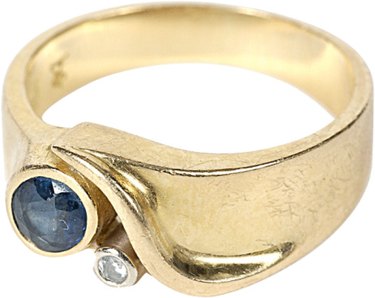
Used for everything from polishing fine jewelry to removing scratches from glass, jeweler's rouge is used by many professionals to put the finishing touch on their projects. Composed of a variety of abrasive powders, the actual composition of jeweler's rouge varies from color to color. Each color of jeweler's rouge represents a different grade of roughness and is suited to different projects.
Red
Video of the Day
Red is the classic color for jeweler's rouge. Made for polishing extremely soft metals like gold and silver, red rouge can also be used on copper, brass, pewter, nickel, chrome and thermoset plastics like Formica. Red rouge is also found in extra-dry bars, typically called "New York Style" red rouge. The drier the rouge, the brighter the finish.
Video of the Day
Black
Black rouge is used less for polishing and more for cutting and prepping materials. While excellent for some metals like aluminum and steel, black rouge can also be used on sturdy materials like iron, nickel, pewter and brass. Black rouge cannot be used on soft metals, like gold or silver, nor can it be used on materials like thermoset plastic, plated metals, rubber and horn.
White
Rougher than red rouge but smoother than black rouge, white rouge is used by jewelers to polish jewelry and to remove scratches and dirt from the surface. It excels at polishing aluminum but can also be used on all precious metals and thermoset plastic. White rouge is too soft for use on hard materials like wood or nickel.
Green
Green rouge is ideal for polishing hard metals like steel and aluminum. Stainless steel is especially suited to the grain of green rouge. It is too rough for gold and silver, and it cannot be used on plastics. It is less rough than black rouge, however, and should not be applied to surfaces like wood or horn.
Brown
Rougher than most grains of jeweler's rouge, brown is slightly softer than black rouge. It can be used on softer metals like gold and platinum; however, brown rouge is also a stand-out choice for buffing and polishing wood. It can be used on hard rubber and plastic surfaces, but should not be used on hard metals like stainless steel.
Blue
While some suppliers recommend blue jeweler's rouge for any and all projects, other suppliers recommend you save blue rouge for projects that use only the finest materials. Less greasy than red jeweler's rouge, blue rouge is intended for polishing, not cutting, materials. Blue rouge is ideal for polishing fine metals like gold, silver and platinum, as well as thermoset plastics.